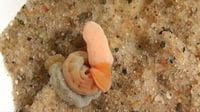The pineapple, enjoyed by people world-wide in slices, chunks, juice, piña coladas, and Hawaiian pizza, is finally giving up its genetic secrets.
Scientists say they have sequenced the genome of the pineapple, an important step towards potentially engineering future drought tolerant crops.
The tropical fruit uses a type of photosynthesis called crassulacean acid metabolism, or CAM, to convert light energy into chemical energy, unlike most crops that use a type of photosynthesis called C3.
Qingyi Yu, Plant and Molecular Biology, Texas A&M University, Saying:
"A CAM plant can adapt to a very dry area so it has a very high water-use efficiency. Compared with the C3 plant, CAM plants only use 20 percent of water."
And that is why scientists have been studying the pineapple's genetic make-up.
The fruit's photosynthesis genes are governed by its circadian clock genes, which enable plants to distinguish between day and night and adapt their metabolism accordingly.
Plants utilizing CAM photosynthesis close their pores during daytime, helping retain moisture.
The researchers hope to unravel the evolutionary process that led the fruit to adopt CAM photosynthesis and re-engineer and potentially adapt it to other crops.
Qingyi Yu, Plant and Molecular Biology, Texas A&M University, Saying:
"Our discovery confirms that it is possible to engineer C3 into CAM photosynthesis which can give it higher water usage efficiency."
With population growth and global warming on the horizon, the genetic secrets of the mighty pineapple could potentially sweeten our ability to deal with these issues in the future.



